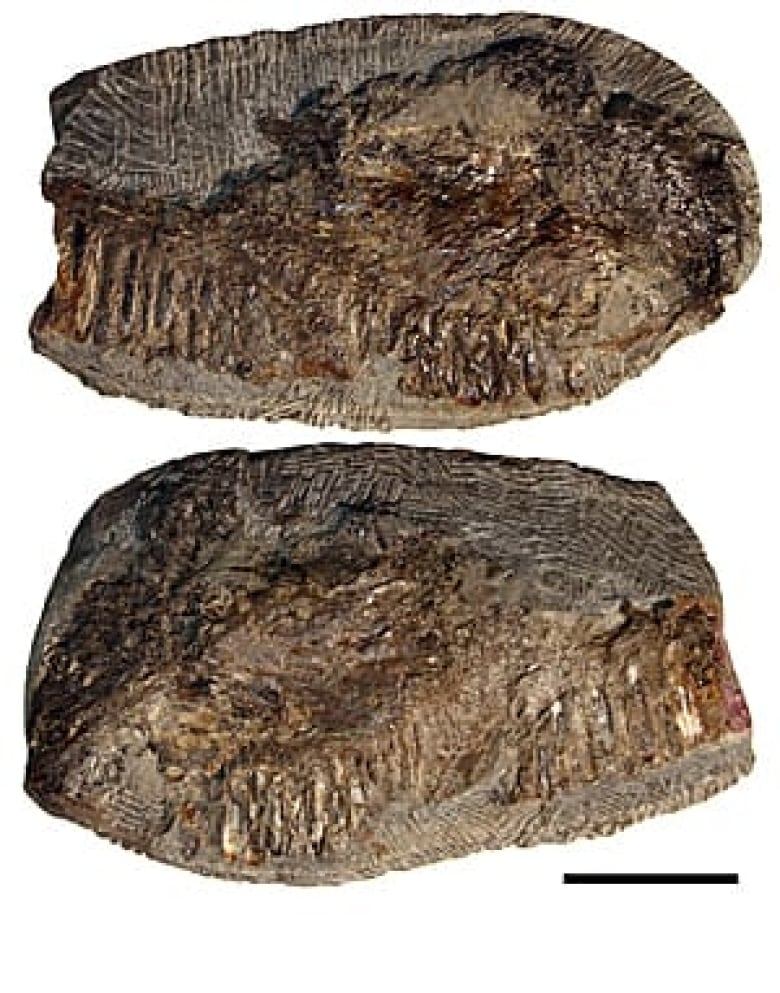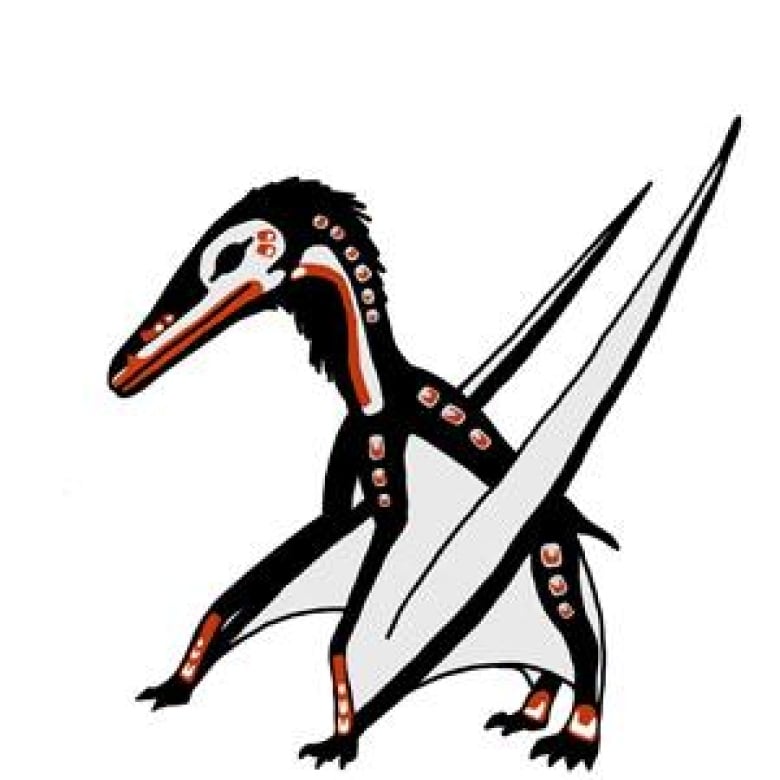B.C.'s 1st pterosaur fossil identified
Pacific beach rocks reveal new species of prehistoric flying reptile

The pterosaur Gwawinapterus beardi likely soaredthrough tropical forestsinhabited bydinosaurs its evolutionary cousins during the late Cretaceous period about 70 million years ago, reported University of Alberta paleontologist Victoria Arbour.
Her findings appearin the January issue of the Canadian Journal of Earth Sciences.
During the late Cretaceous period, Hornby Island was located in the area where California is today and was lusher and steamier.
The new speciesis the first pterosaur ever found in B.C., the second species of pterosaur ever found in Canada and the first "uniquely Canadian" species, said Arbour, a Ph.D. student who is originally from Halifax, N.S.
'Raven's wing'
The first halfof the pterosaur's scientific namederives partlyfrom the word "Gwa'wina" which means raven in the Kwak'wala language of the Kwakwaka'wakw First Nations and partly from the Greek word "pteron," which means wing.The Kwakwaka'wakw people are indigenous to Hornby Island, neighbouring islands andVancouver Island.
The reptile was identified from a fossil jawbone discovered by Graham Beard, a well-known fossil collector who runs the Vancouver Island Paleontological Museum in Qualicum Beach on Vancouver Island. Arbour named the species after him.
Fossil hunting isn't as easy in B.C. as it is in the Alberta, where entire dinosaur fossils are dug up in the badlands of Dinosaur National Park, Arbour noted.
In B.C., fossil hunters comb the beaches along the Pacific coast.
"They basically pick up rocks, and they crack them open, and sometimes, they have fossils inside," Arbour said.
Beard found what he thought to be a dinosaur bone inside a rock on the beach of Hornby Island, one of the Gulf Islands off the east coast of Vancouver Island.

Arbourexaminedthe fossil's distinctive, arrow-like teeth attached to the jawbone and compared them tothe teeth of variousdinosaurs, marine reptiles, lizards, fish and birds.
At first, she didn't consider pterosaurs because known pterosaurs during the late Cretaceous didn't have teeth buta friend encouraged her to explore the possibility.
Finally, Arbour found a paper showing teeth that looked very similar to the ones she had been examining. They belonged to a Chinese pterosaur from the early Cretaceous.
'Piranha teeth'

"The teeth look a little bit like piranha teeth the way that they're packed really close together," Arbour said.
They sit at the end of a long snout, so Arbour thinks the pterosaur may have been good at "sticking its nose in [and] nibbling the food off" bones that had already been picked over by other animals. It may also have hunted prey such as small dinosaurs, lizards or fish.
Based on the jaw alone, she thinks the pterosaur may have had a wingspan of three metres. However, other bones would be needed for a better estimate.
Arbour hopes the discovery of other pterosaur bones in B.C. will be more likely now that fossil hunters are aware that pterosaurs lived in the area.
"If people keep their eyes open while they're out looking on those beaches, you never know what you might find," she said.












_(720p).jpg)


 OFFICIAL HD MUSIC VIDEO.jpg)
.jpg)



























































































